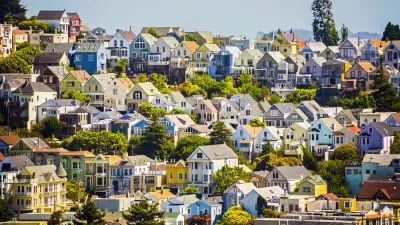Through the lens of the Los Angeles region, Becky M. Nicolaides and Andrew Wiese examine how America's suburbs sustain and reinforce inequality.
Nicolaides, a research scholar at the U.C.L.A. Center for the Study of Women, and Wiese, a professor of history at San Diego State University, use wealthy Bradbury and working class Azusa, and other communities, to explain the "power of places to fix inequity over time," which they call "a defining pattern of contemporary suburban life."
"Nationwide, rich and poor neighborhoods like these house a growing proportion of Americans, up to 31 percent compared with 15 percent in 1970, according to a recent study by Sean F. Reardon and Kendra Bischoff. Meanwhile, iconic middle-income suburbs are shrinking in numbers and prospects. Today’s suburbs provide a map not just to the different worlds of the rich and the poor, which have always been with us, but to the increase in inequality between economic and social classes."
"From the historian’s perspective, these patterns also reveal another truth about suburban places: their tendency to sustain and reinforce inequality. Bradbury and Azusa have maintained their spots in the top and bottom tiers of the Los Angeles suburbs for decades."
As the authors note, the "suburbs aren’t going anywhere." So what can be done to reverse this dynamic?
"Policies to redress suburban inequality must focus not only on factors like income but also on tax equity across metro areas and regional planning that fairly distributes resources and responsibilities (like affordable housing)," they suggest.
FULL STORY: Suburban Disequilibrium

Maui's Vacation Rental Debate Turns Ugly
Verbal attacks, misinformation campaigns and fistfights plague a high-stakes debate to convert thousands of vacation rentals into long-term housing.

Planetizen Federal Action Tracker
A weekly monitor of how Trump’s orders and actions are impacting planners and planning in America.

San Francisco Suspends Traffic Calming Amidst Record Deaths
Citing “a challenging fiscal landscape,” the city will cease the program on the heels of 42 traffic deaths, including 24 pedestrians.

Defunct Pittsburgh Power Plant to Become Residential Tower
A decommissioned steam heat plant will be redeveloped into almost 100 affordable housing units.

Trump Prompts Restructuring of Transportation Research Board in “Unprecedented Overreach”
The TRB has eliminated more than half of its committees including those focused on climate, equity, and cities.

Amtrak Rolls Out New Orleans to Alabama “Mardi Gras” Train
The new service will operate morning and evening departures between Mobile and New Orleans.
Urban Design for Planners 1: Software Tools
This six-course series explores essential urban design concepts using open source software and equips planners with the tools they need to participate fully in the urban design process.
Planning for Universal Design
Learn the tools for implementing Universal Design in planning regulations.
Heyer Gruel & Associates PA
JM Goldson LLC
Custer County Colorado
City of Camden Redevelopment Agency
City of Astoria
Transportation Research & Education Center (TREC) at Portland State University
Jefferson Parish Government
Camden Redevelopment Agency
City of Claremont





























